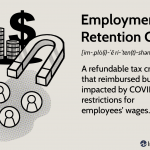EV Tax Credit 2023 Rules and Qualifications for Buying Electric Vehicle
Thinking of buying an electric vehicle this year or in 2024? The federal EV tax credit could save you thousands, but changes from the Inflation Reduction Act have expanded and modified the electric vehicle tax credit, making the rules more complex. Which means that a person that purchases qualified vehicles through 2032 may be eligible for this new tax benefit. However, there may be some hurdles for people to go through as the changes — including new income requirements and other vehicle guidelines — roll out this year. This article will cover the rules, qualifications and how to claim the credit.
What is an EV Credit?
Put simply, the US government gives you money, in the form of a tax credit, for purchasing a qualified electric vehicle. The credit has been around for a while. But, the rules changed in the summer of 2022 with the passing of the Inflation Reduction Act (IRA). And the changes make the credit less accessible to many taxpayers. If you are wondering how EV credits worked before the IRA (pre 2023) check out this article by Small Evergreen CPA. The tax benefit for years 2023 through 2032, allows for a maximum credit of $7,500 for new EVs, and up to $4,000, limited to 30% of the sale price, for used EVs. Taxpayers can only claim one credit per vehicle.
According to an article in NerdWallet, “in 2024, the IRS is expected to allow consumers to transfer the credit to the dealer to lower the price of the car by the credit amount, which will effectively allow all eligible consumers to benefit from the tax break.”
So to recap the EV credit gives you up to $7,500 for purchasing a qualifying electric car, SUV, van, or truck. But new restrictions based on vehicle price, manufacturer, assembly, and critical mineral sourcing mean not all models are eligible anymore. Income limits also now apply.
EV Credits 2023 and after
The maximum credit is still a non-refundable $7,500, but the EV credits work differently with the passing of the IRA. The IRA broadened the range of vehicles that qualify, but restricted the amount of taxpayers able to take them (more on this later).
Lets go over the new rules for purchasing brand new electric vehicles.
Criteria for new EV to qualify:
- purchased brand new
- have an external charging source
- used in the United States primarily
- have a gross weight rating of less than 14,000 lbs
- not purchased to resell
- two components; $3,750 credit for critical mineral requirements (critical minerals extracted or processed in the US) and $3,750 for battery component requirements (battery produced or assembled in US)
- produced by qualified manufacturer
- final assembly in North America
Number of units sold is no longer a limitation, and, in an effort to stimulate US manufacturing, the final assembly of a qualified EV must be completed in North America.
Price cap
- As of 2023, vans, SUVs and pickup trucks must have an MSRP, or manufacturer’s suggested retail price, of $80,000 or under to qualify for the credit.
- Other vehicles, such as sedans and passenger cars, are capped at $55,000.
- For used vehicles, the price cap drops to $25,000.
For new vehicles, the MSRP, as defined by the IRS, is the base retail price provided by the manufacturer plus the retail price of each accessory or optional piece of equipment that is physically present on the car at the time of delivery to the dealer. For purposes of claiming the credit, MSRP does not include taxes and other fees added on by the dealer.
Which cars qualify for a federal EV tax credit?
As of Aug. 28, 2023, the following fully electric and plug-in hybrid vehicles are eligible for either a full or partial tax credit if delivered on or after April 18, 2023. People can use a site called fueleconomy.gov, to search for qualified EV’s. Just input year/make/model to check eligibility. You can also find a list of manufacturers and qualified models on the IRS website here. The selling dealer is also required to provide you with a written statement detailing, under penalties of perjury, the maximum allowable EV credit for the vehicle you are buying.
| Car Make and Model | Tax Credit Amount | MSRP Limit |
|---|---|---|
| BMW X5 xDrive50e (2024) | $3,750. | $80,000. |
| Cadillac Lyriq (2023-2024) | $7,500. | $80,000. |
| Chevrolet Blazer (2024) | $7,500. | $80,000. |
| Bolt (2022-2023) Bolt EUV (2022-2023) | $7,500. | $55,000. |
| Equinox (2024) | $7,500. | $80,000. |
| Silverado (2024) | $7,500. | $80,000. |
| Chrysler Pacifica PHEV (2022-2024) | $7,500. | $80,000. |
| Ford E-Transit (2022-2023) | $3,750. | $80,000. |
| Escape (2022-2023) | $3,750. | $80,000. |
| F-150 Lightning (standard and extended range battery) (2022-2023) | $7,500. | $80,000. |
| Mustang Mach-E (standard and extended range battery) (2022-2023) | $3,750. | $80,000. |
| Jeep Grand Cherokee PHEV 4xe (2022-2024) | $3,750. | $80,000. |
| Wrangler PHEV 4xe (2022-2024) | $3,750. | $80,000. |
| Lincoln Aviator Grand Touring (2022-2023) | $7,500. | $80,000. |
| Corsair Grand Touring (2022-2023) | $3,750. | $80,000. |
| Rivian R1S (2022-2023) R1T (2022-2023) | $3,750. | $80,000. |
| Tesla Model 3 Standard Range RWD (2022–2023) | $7,500. | $55,000. |
| Model 3 Performance (2022–2023) | $7,500. | $55,000. |
| Model Y Performance (2022–2023) Model Y AWD (2022–2023) Model Y Long Range AWD (2022–2023) | $7,500. | $80,000. |
| Model 3 Long Range AWD (2023) | $7,500. | $55,000. |
| Volkswagen ID.4 Pro ID.4 Pro S ID.4 Pro S Plus ID.4 AWD Pro ID.4 AWD Pro S ID.4 AWD Pro S Plus ID.4 S ID.4 Standard (2023) | $7,500. | $80,000. |
Income limit
Along with price caps on cars, the new credit also sets limits on the modified adjusted gross income that taxpayers can make in order to qualify. Per the IRS, you can use your MAGI from either the year the car is delivered or the year before delivery.
This means if your income exceeded the threshold one year, but was below the cap during the other year, you may still be able to snag a credit.
You cannot claim an EV credit if your AGI exceeds the following amounts:
- Married Filing Jointly – $300,000
- Head of Household – $225,000
- All other taxpayers – $150,000
Limitations
EV credits will be more restrictive for a lot of taxpayers. Gone are the days of trading in your top of the line, six figure Tesla Model S every year for the newest latest and greatest, and subsidizing the initial cash outlay with a nice big $7,500 credit at tax time.
There are now MSRP restrictions and adjusted gross income (AGI) restrictions we need to cover. Let’s begin with the MSRP restrictions.
Previously, the EV credit phased out once a manufacturer sold 200,000 EVs. Now, vehicle assembly in North America and domestic battery component production are required. Used EVs also qualify for a smaller credit if certain criteria are met.
However, credits have narrowed due to price caps on MSRP and adjusted gross income thresholds. At certain luxury price points or income levels, you may no longer qualify. Price add-ons like certain option packages can also tip the scales.
How to claim the federal EV tax credit
To claim the credit, taxpayers can file Form 8936 when they file their federal income taxes. The credit is nonrefundable, which means it can lower or eliminate taxes owed but will not result in a refund. You also won’t be able to carry over any excess amount to offset future taxes
Fine print details: According to the agency, you generally can only claim the clean vehicle tax credit for the tax year the vehicle was delivered to you, not necessarily the year it was purchased.
This means, for example, that if you bought a qualifying EV in 2023 but won’t receive it until 2024, you must claim the credit on your 2024 tax return (filed in 2025). If you purchase a qualifying vehicle in 2023 and it is delivered during the same calendar year, you can claim the tax credit on your 2023 tax return (filed in 2024).
In 2024, taxpayers may also be able to transfer the credit to the dealership for a direct discount on the car rather than waiting until the next calendar year to claim the credit on their returns. The IRS is expected to issue further guidance on this credit flexibility in the coming months
Conclusion
Carefully research the EV model, its components, assembly, and your tax situation before purchase. The dealership must provide eligibility details too. With thorough preparation, you can maximize potential savings from the revamped federal credit. But failing to account for the new rules could negate expected tax relief.
The EV credit aims to encourage environmentally-friendly purchases, but it has evolved into a more targeted incentive. Understanding the latest changes takes some diligence, but the payoff could be $7,500 back in your pocket. If you’re confused about your eligibility or want guidance for your personal situation, consider consulting a qualified tax professional, such as Huckabee CPA for a free consultation before pull the trigger the vehicle purchase.











